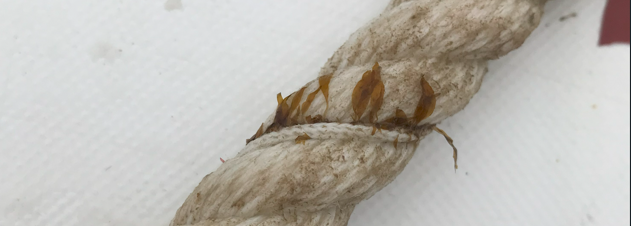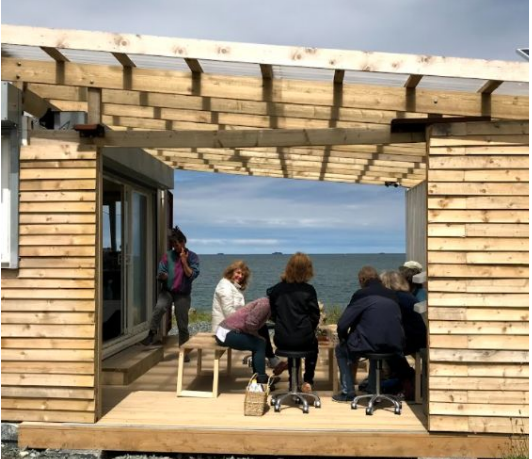The PEBL Mission: Why do we do what we do?
- Anjali Krishna
- Apr 22
- 4 min read
At PEBL CIC, our mission is clear and urgent: we aim to transform marine monitoring by making it consistent, unobtrusive, and affordable. Why? Because safeguarding our oceans demands reliable and accessible data.
Our journey began in 2019 with the cultivation of seaweed and the operation of a seaweed hatchery, supplying high-quality seedlings to seaweed farmers across the UK.
We chose seaweed cultivation for several compelling reasons:
Minimal Environmental Impact: Seaweed grows in marine environments without the need for fertilizers, pesticides, freshwater, or soil, making it an environmentally sustainable crop.
Native Species with High Market Value: The UK is home to native seaweeds like kombu (kelp) and nori (laver), which are highly valued in Asian markets.
Global Precedents for Economic Benefits: In countries with coastlines and communities similar to the UK, such as China, South Korea, and Japan, seaweed farming constitutes a significant portion of coastal employment and income.
Europe's Advancements Highlight UK's Lag: By 2019, European countries like Norway, Sweden, France, and the Netherlands had been cultivating seaweed for over a decade. Despite the UK's ideal conditions, seaweed cultivation remained a niche industry, indicating a missed economic and environmental opportunity.
Through our experience operating the hatchery, we learned first-hand the critical importance of effectively monitoring seaweed stocks. Accurate and reliable monitoring is essential not only to ensure the viability of seaweed farms but also to understand their ecological impacts on marine ecosystems. However, existing marine monitoring tools were prohibitively expensive and often inaccessible to smaller-scale operations, which shifted our focus toward developing affordable, innovative monitoring solutions.
While the UK government has set ambitious marine conservation targets, including committing to protect 30% of oceans by 2030, current approaches predominantly rely on large institutions and scientific bodies for monitoring and data collection. Although these organizations provide high-quality data, the overall spatial and temporal coverage of datasets remains insufficient to ensure genuinely effective protection of Marine Protected Areas (MPAs). For instance, while 47% of UK domestic waters are designated as MPAs, less than 1% of these areas are effectively protected due to the limited measures in place. Moreover, 74% of inshore MPAs still allow destructive practices such as bottom trawling, highlighting significant gaps between policy and practice (bloomberg.org; thetimes.co.uk).

Addressing these gaps between intention and reality requires widespread deployment of lower-cost, more accessible monitoring tools. Empowering citizens, coastal communities, and smaller-scale marine operators—such as aquaculturists, fishers, and other marine users—with these tools could significantly enhance marine data collection. This democratization of data collection would lead to more informed decision-making, improved marine management practices, greater personal investment in environmental health and, in all, stronger protection for marine ecosystems.
But making data collection more accessible isn’t just about technology—it’s about people. At PEBL CIC, we know that real change comes when communities are equipped and inspired to take part. Urgent action is needed to protect our coastal marine ecosystems from mounting threats like climate change, invasive species, and biodiversity loss. To meet these challenges, we believe in building a more diverse, passionate, and informed movement for ocean health.
We’ve seen firsthand how powerful community engagement can be. Over the past few years, we’ve been involved in a wide range of workshops, public outreach, and collaborative events designed to build stronger connections between people and the marine environment. From the Coastal Community Leaders programme in North Anglesey—where local residents explored marine issues and developed grassroots projects—to hands-on seaweed cultivation sessions with university students, these gatherings have sparked meaningful dialogue and inspired local action.
We’ve hosted climate resilience discussions with community members, welcomed visitors to our hatchery for foreshore walks and seaweed cooking, and co-organised family-friendly events like European Maritime Day in Swansea, where seaweed took centre stage in cooking demos and educational activities. Each of these events has reinforced how important it is to create accessible, welcoming spaces for people to learn, share, and get involved.
Through all of these experiences, we’ve learned that community engagement is not a side mission—it’s a core part of achieving our environmental goals. By deepening the connection between people and place, we help grow a collective sense of responsibility and agency.
With this strong foundation in place, we turned our focus toward building the tools people needed to act. We began tackling the challenge of making more affordable monitoring tools in 2020 using low-cost off-the-shelf sensors such as the HOBO Pendant Loggers, to measure the key environmental parameters that dictate the successful growth of cultivated seaweeds. Although we were able to collect valuable data at a reasonable cost, these devices did not withstand the harsh conditions of the coastal environment and were complicated to deploy, retrieve and download data from.
We began tackling the challenge of making more affordable monitoring tools in 2020 using low-cost off-the shelf sensors such as the HOBO Pendant Loggers, to measure the key environmental parameters that dictate the successful growth of cultivated seaweeds. Although we were able to collect valuable data at a reasonable cost, these devices did not withstand the harsh conditions of the coastal environment and were complicated to deploy, retrieve and download data from.
These early proof of concept devices allowed us to learn about what parameters are useful, how often and how long do we need to measure for and how to design marine monitoring tools to be user friendly whilst being robust.
Reflecting on these insights, we've evolved our monitoring technology to develop robust, reliable, and user-friendly solutions specifically designed for the marine environment. Our innovative devices, such as the GrowProbe and SubCam, aim to be more resilient but also simpler to deploy and maintain, ensuring that vital data can be continuously collected with minimal hassle. By empowering users—ranging from small-scale aquaculturists and fishermen to community groups and environmental researchers—we’re democratising marine data collection, bridging gaps in existing marine monitoring networks, and promoting a more holistic understanding of ocean health.
At PEBL CIC, our vision is to ensure that ocean data is open, accessible, and actionable for everyone—from Welsh coastal communities to global marine conservation projects. We believe sustainable ocean management starts with better data, and that’s exactly what we're delivering.













































Comments